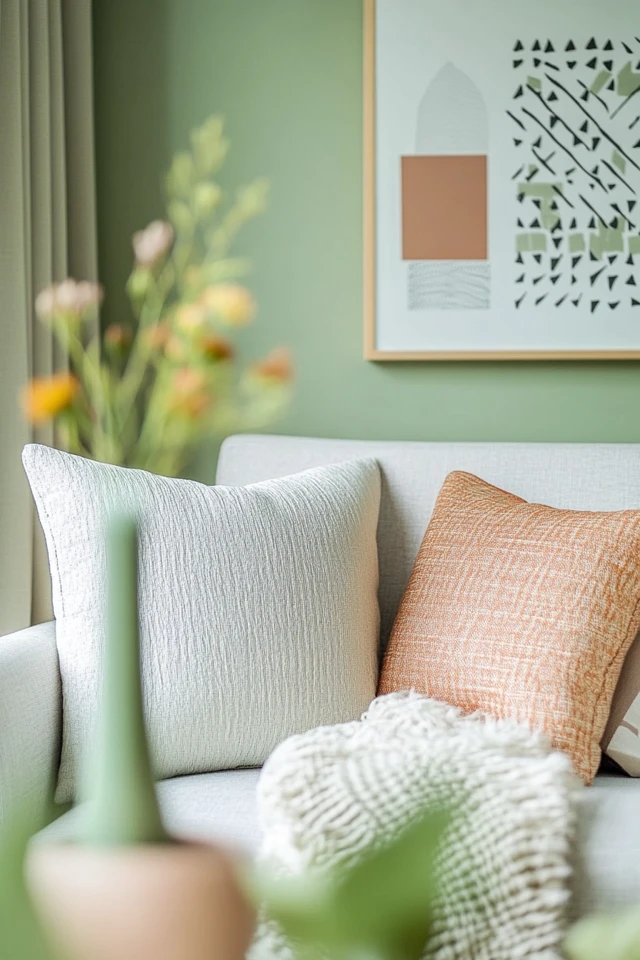Scandinavian design is beloved for its clean lines, minimalism, and timeless functionality, but one of its most understated features is the thoughtful use of simple geometric shapes. Whether through patterns, furniture silhouettes, or decorative accents, geometric elements play a key role in adding structure, balance, and visual interest to Scandinavian interiors. By incorporating triangles, circles, hexagons, and other shapes into your design, you can elevate the aesthetic of your space while staying true to the Scandinavian ethos of simplicity and purpose.
My own journey into Scandinavian design began with a small geometric rug—a modest addition to my living room that unexpectedly transformed the entire space. The subtle triangular pattern in soft gray and white gave the room a sense of order and harmony without overpowering its serene aesthetic. From there, I began incorporating geometric shapes in other ways: a round coffee table, hexagonal wall shelves, and even a few abstract art prints. Each addition felt purposeful and cohesive, proof that even the simplest shapes can make a big impact when used thoughtfully.
In this guide, we’ll explore how to integrate simple geometric shapes into Scandinavian design, from furniture to accessories, and offer practical tips for creating a harmonious, visually engaging space that embodies the timeless charm of Nordic interiors.
Why Geometric Shapes Work in Scandinavian Design
1. They Add Structure and Balance
Scandinavian interiors are known for their sense of order and simplicity, and geometric shapes naturally contribute to this aesthetic. Straight lines, symmetrical patterns, and circular forms bring a sense of balance and rhythm to a space, creating a cohesive environment that feels calm and organized.
For example, a hexagonal tile backsplash in a Scandinavian kitchen introduces clean, repetitive shapes that enhance the room’s structure without adding clutter. This subtle geometry helps maintain the minimalist charm while adding depth and character.
2. They Enhance Visual Interest Without Overwhelming
While Scandinavian design thrives on minimalism, it also recognizes the importance of visual variety. Geometric shapes introduce pattern and texture in a way that feels understated and intentional. Instead of bold, flashy designs, geometric elements in Scandinavian spaces are often soft, neutral, and muted, allowing them to enhance the aesthetic without overwhelming it.
A simple example might be a triangular-patterned throw pillow or a rug with overlapping circles. These shapes provide just enough detail to catch the eye while remaining in harmony with the overall design.
3. They Reflect Scandinavian Functionality
Geometric shapes aren’t just decorative—they’re also functional. Scandinavian furniture and décor often utilize geometric principles to create versatile, ergonomic designs. Rectangular storage units, round dining tables, and angular light fixtures not only look stylish but also optimize space and usability.
A round mirror with a minimalist frame, for instance, isn’t just visually appealing—it also serves to reflect light and make the room feel larger and brighter, aligning with the Scandinavian love of practical yet beautiful solutions.
How to Incorporate Simple Geometric Shapes in Scandinavian Interiors
Step 1: Start with Geometric Patterns in Textiles
Textiles are one of the easiest ways to introduce geometric shapes into your Scandinavian design. Look for rugs, throw pillows, and curtains with simple, repetitive patterns in neutral tones. Triangles, diamonds, and chevrons are particularly popular in Scandinavian décor.
For example, a handwoven wool rug with a black-and-white diamond pattern can anchor a living room, while a set of cushions with subtle geometric prints adds texture to a minimalist sofa. Choose muted colors like gray, beige, or pastel hues to maintain the understated elegance of Scandinavian interiors.
Step 2: Use Geometric Shapes in Furniture Design
Scandinavian furniture often incorporates geometric shapes in its construction, from the clean lines of rectangular dining tables to the soft curves of rounded chairs. These pieces create a sense of structure and harmony within the space.
Opt for a circular dining table to soften the straight lines of other furniture or consider a rectangular bookshelf with an open, grid-like design to add a geometric focal point to the room. Pair these with other simple, functional pieces to ensure the space remains cohesive and uncluttered.
Step 3: Incorporate Geometric Wall Art
Wall art is another great way to showcase geometric shapes in Scandinavian design. Abstract prints featuring circles, triangles, or angular designs in neutral or muted tones can bring life to bare walls without overwhelming the minimalist aesthetic.
For instance, a series of small, framed geometric prints arranged in a grid on a white wall creates a striking yet subtle gallery display. Alternatively, a single oversized abstract piece with a circular motif can serve as a bold focal point above a sofa or bed.
Step 4: Experiment with Geometric Lighting
Scandinavian lighting fixtures often feature geometric designs, such as angular pendant lights, hexagonal wall sconces, or round globe chandeliers. These fixtures not only provide functional light but also double as sculptural elements that enhance the room’s design.
A matte black pendant light with a geometric frame, for example, can add an industrial edge to a Scandinavian kitchen, while a cluster of round glass bulbs over a dining table creates a soft, ambient glow.
Step 5: Choose Geometric Accessories
Accessories like mirrors, planters, and decorative objects offer another way to incorporate geometric shapes into your space. A round mirror framed in light wood can make a small Scandinavian hallway feel larger, while hexagonal planters bring both greenery and structure to a room.
Consider grouping a set of small, angular vases or candleholders on a coffee table for a cohesive decorative display. These small touches can make a big difference in adding depth and personality to the space.
Step 6: Opt for Geometric Tile Designs
Geometric tiles are a stunning way to bring pattern into Scandinavian kitchens, bathrooms, or entryways. Hexagonal tiles, herringbone patterns, or chevron designs create visual interest while maintaining the clean lines of Scandinavian design.
For example, a white herringbone tile backsplash in the kitchen adds texture without detracting from the room’s simplicity. Pair it with wooden countertops and black hardware for a classic Nordic look.
Picture Gallery
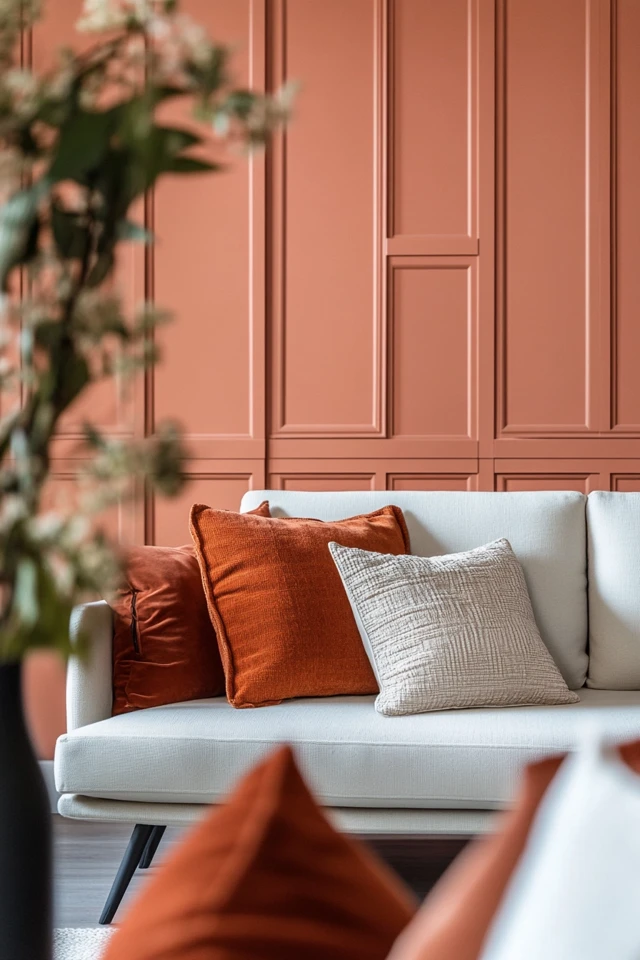
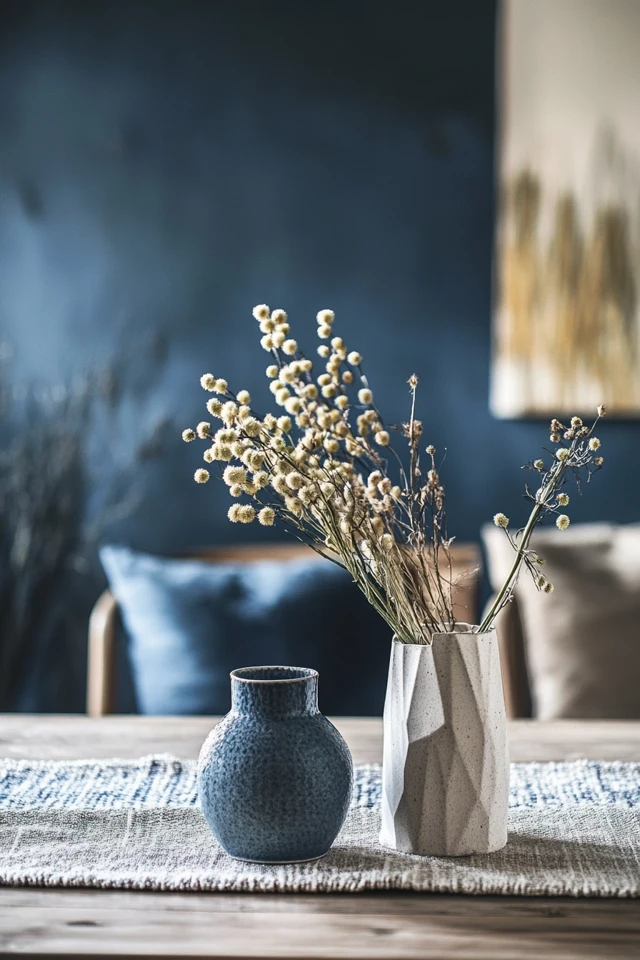
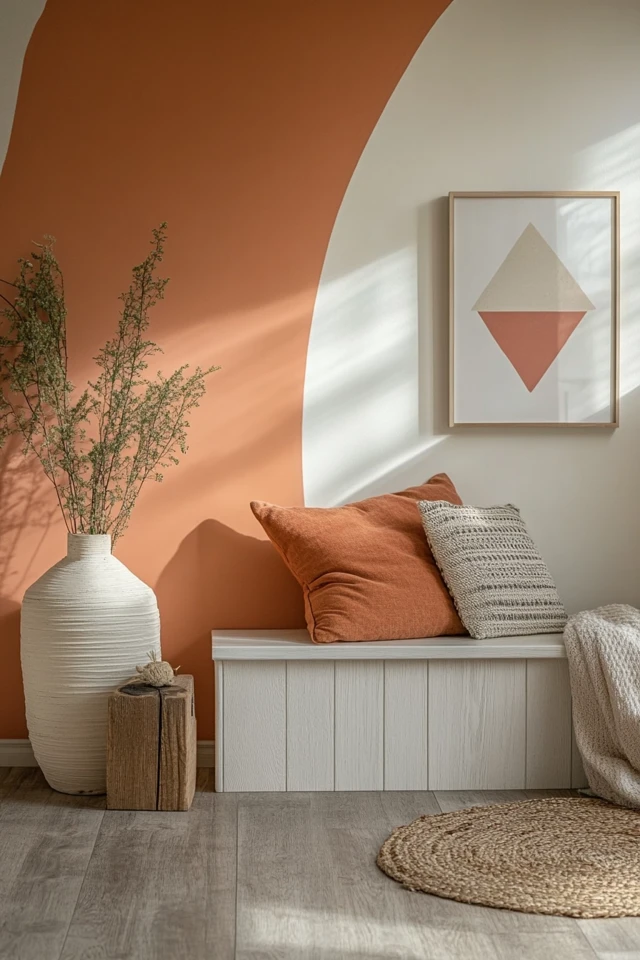
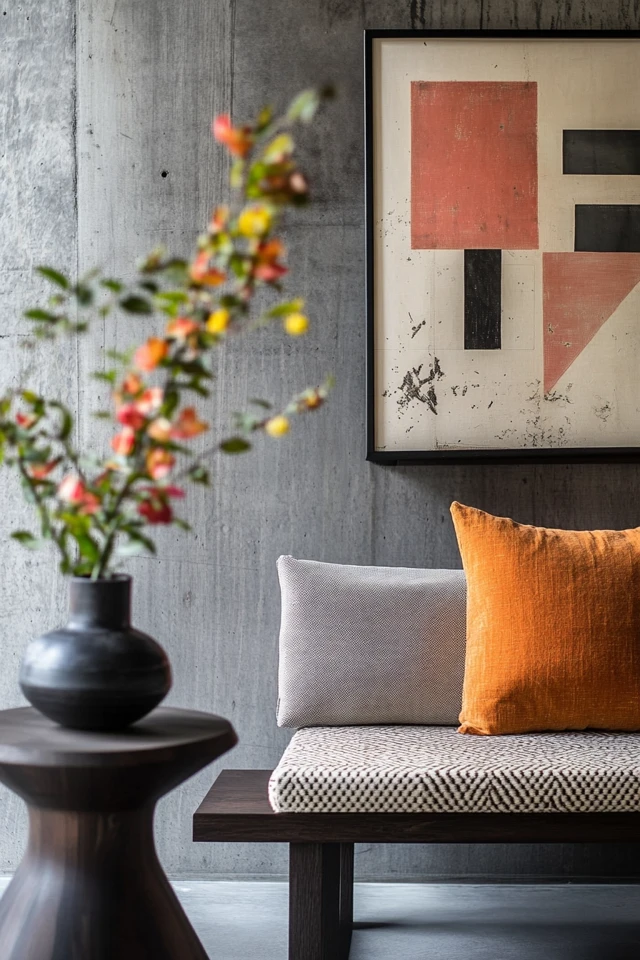
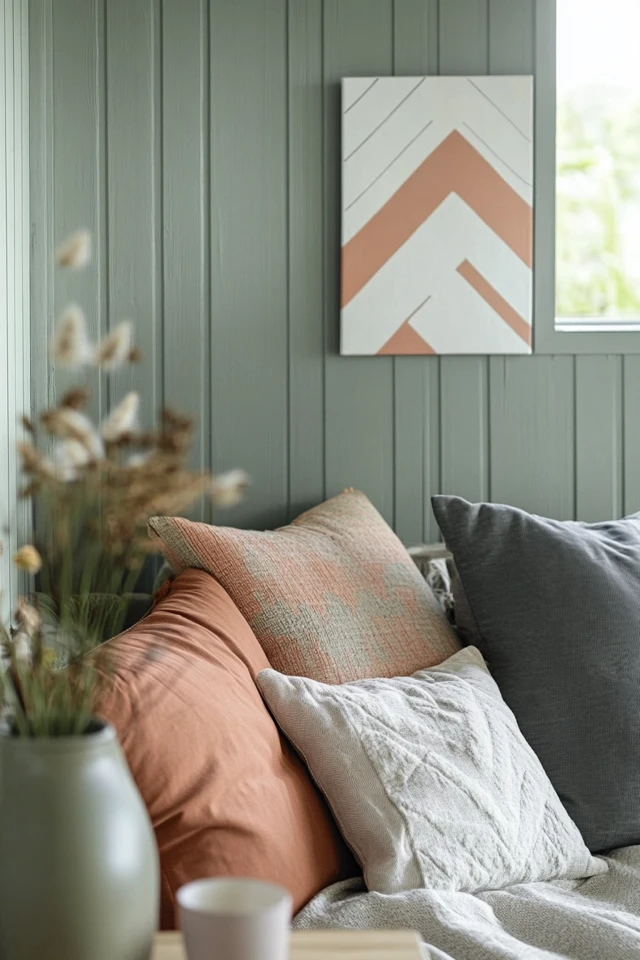
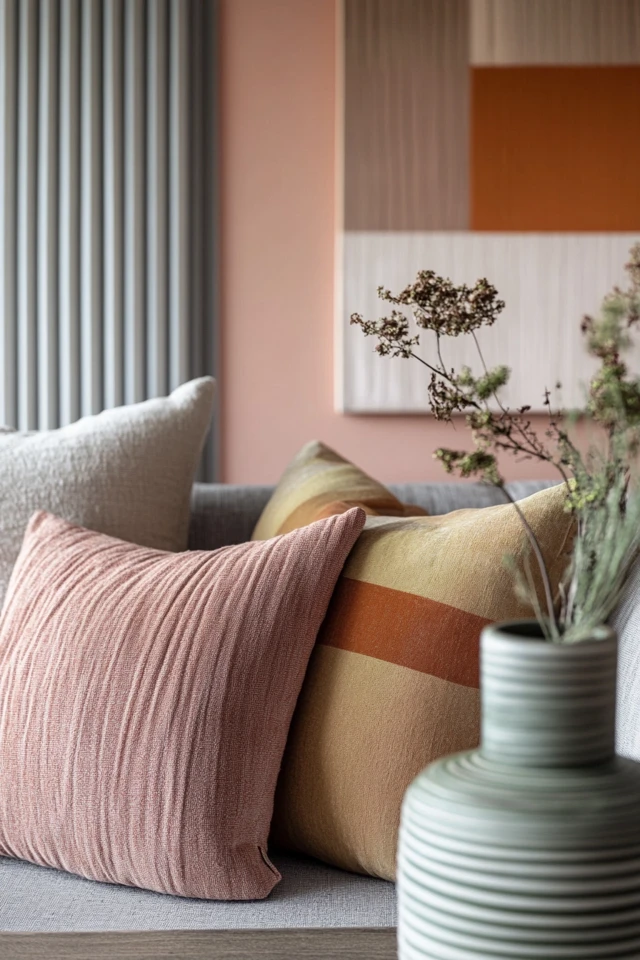
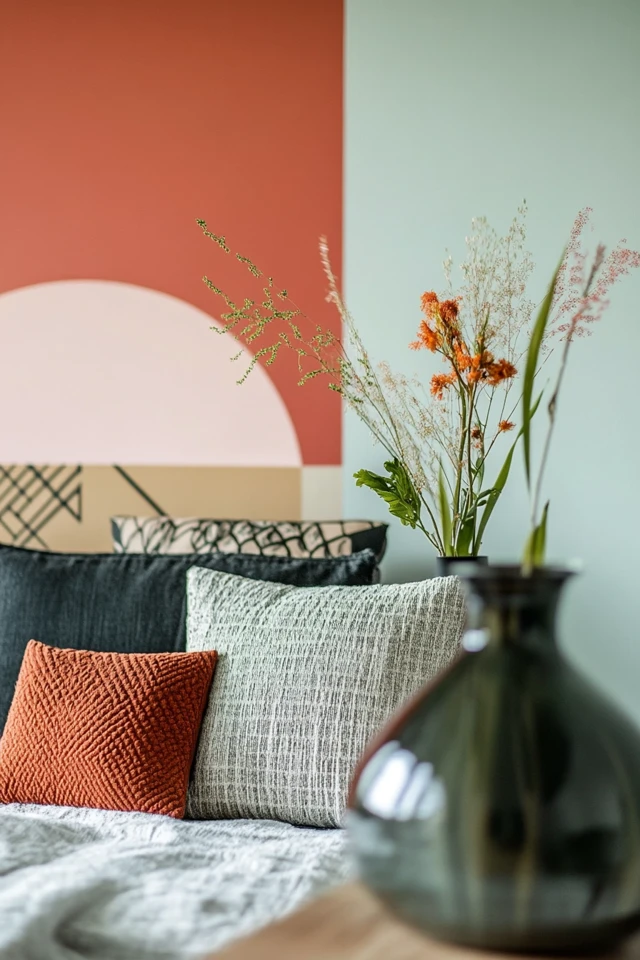
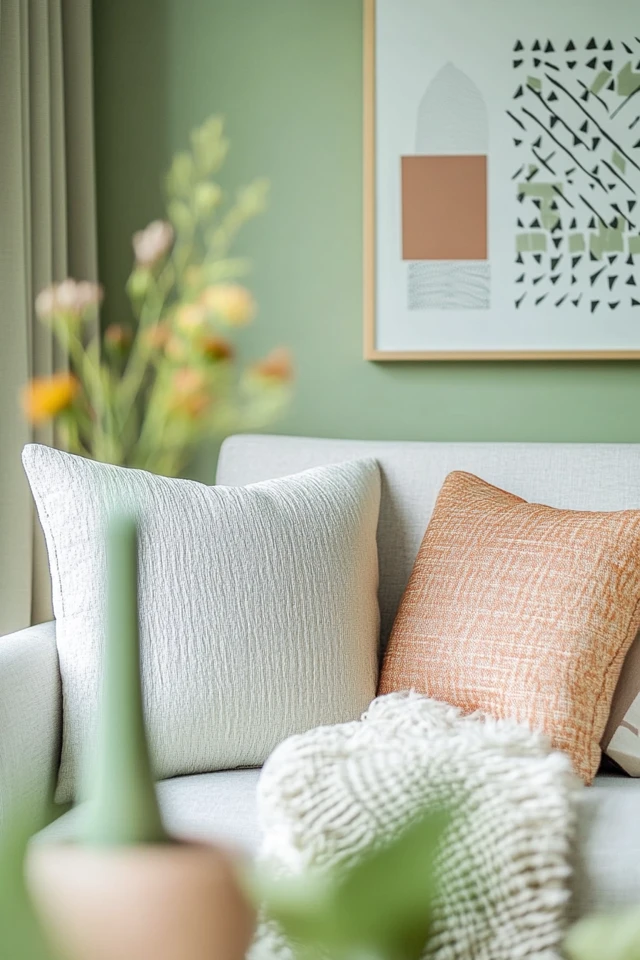
FAQ Section
1. What shapes are most commonly used in Scandinavian design?
Triangles, circles, hexagons, and rectangles are some of the most frequently used shapes. These simple forms align with the clean and minimalist aesthetic of Scandinavian interiors.
2. How do I balance geometric patterns in a small space?
Use geometric shapes sparingly in small spaces. A single patterned rug or a few geometric throw pillows are enough to add interest without overwhelming the room.
3. Can I mix geometric shapes in one room?
Yes, mixing shapes can create visual variety, but stick to a consistent color palette to maintain harmony. For instance, pair a circular mirror with a diamond-patterned rug, but keep both in neutral tones.
4. How do I incorporate geometric shapes without making the space feel busy?
Focus on simplicity. Choose one or two geometric elements—such as a patterned rug and a round table—and keep the rest of the space neutral and uncluttered.
5. What materials work best for geometric designs in Scandinavian décor?
Natural materials like wood, ceramic, and wool work beautifully. These materials enhance the Nordic connection to nature while keeping the geometric elements subtle and elegant.
Variations
- Minimalist Approach: Stick to a monochromatic palette and limit geometric shapes to one or two focal pieces, such as a rug or a light fixture.
- Bold and Playful: Incorporate larger patterns and brighter colors, such as pastel pinks or yellows, for a more vibrant Scandinavian look.
- Industrial Blend: Pair geometric elements with metal furniture or concrete surfaces for a Scandinavian-industrial hybrid.
How to Showcase This Design
Living Room Elegance
Use a diamond-patterned rug to ground the seating area and hang a series of geometric prints above the sofa for a cohesive look.
Kitchen Charm
Add a herringbone tile backsplash and a round pendant light over the dining table to create a functional yet stylish Scandinavian kitchen.
Bedroom Tranquility
Incorporate a circular mirror above the dresser, a triangular-patterned throw blanket on the bed, and a hexagonal side table for subtle geometry in a serene bedroom.
Conclusion
Simple geometric shapes are a cornerstone of Scandinavian design, adding balance, structure, and visual interest to minimalist interiors. By thoughtfully incorporating shapes through furniture, textiles, lighting, and accessories, you can create a harmonious space that feels both stylish and functional. Whether you’re adding a hexagonal tile backsplash, choosing an abstract geometric print, or layering patterned throw pillows, these elements will bring your Scandinavian-inspired space to life. Experiment with these ideas and watch as simple shapes transform your home into a timeless Nordic retreat.

